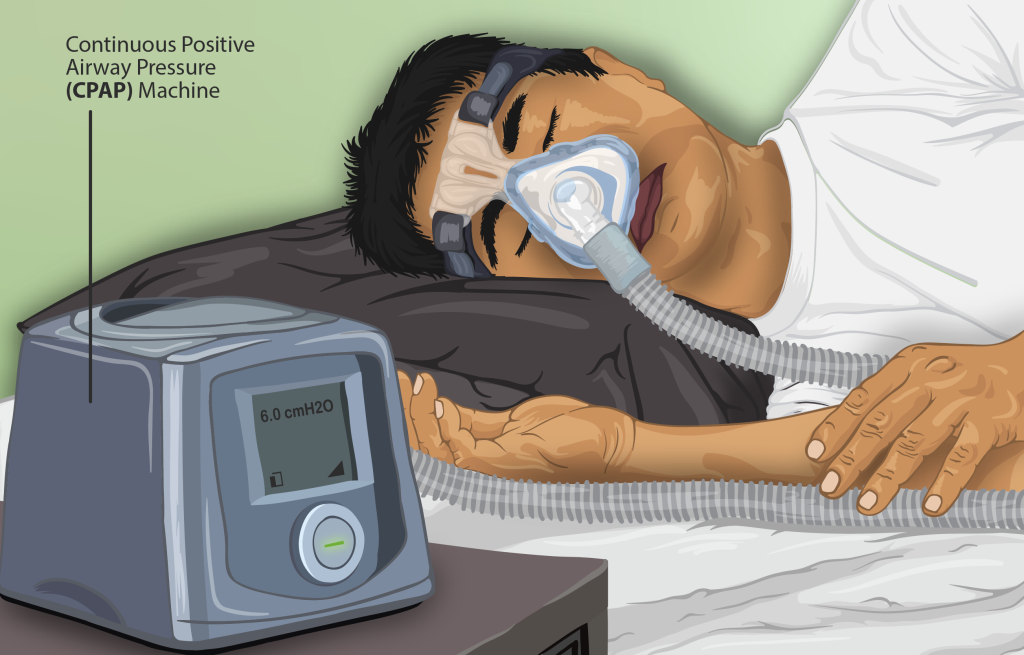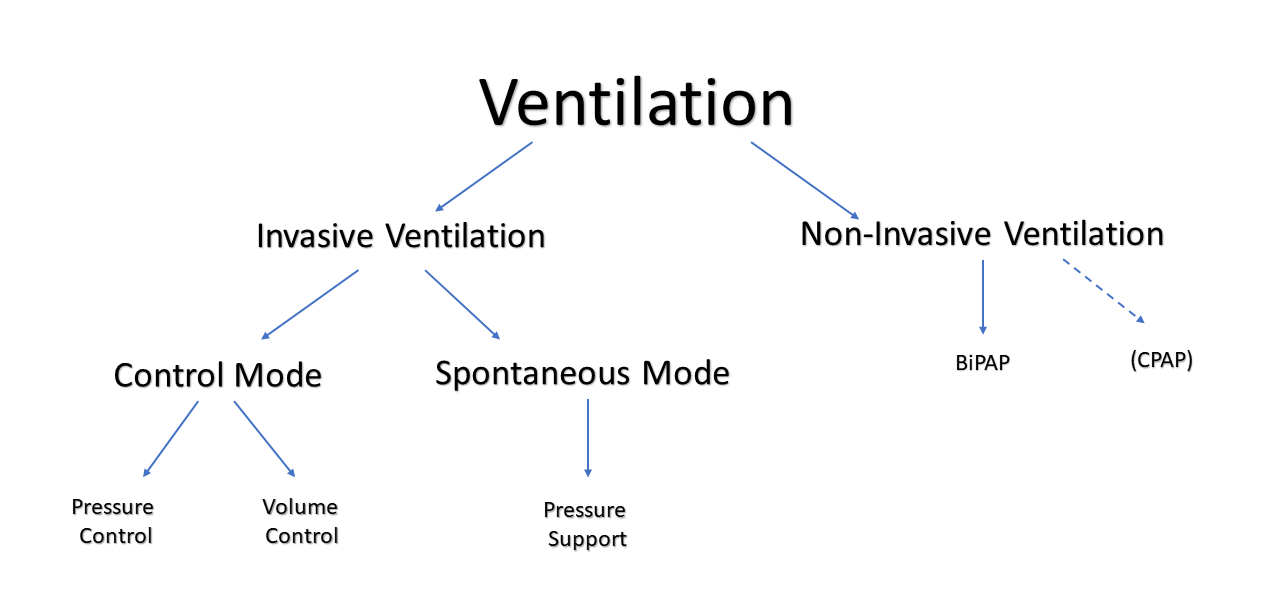4.1 What is Non-Invasive Ventilation?
Non-invasive respiratory support or non-invasive ventilation (NIV) encompasses both non invasive positive pressure ventilation (NIPPV) and continuous positive airway pressure (CPAP). NIV applies positive pressure to the lungs via a mask that seals tightly with straps on the face. It allows the delivery of positive pressure ventilatory support without the use of an artificial airway such as an ETT or tracheostomy tube. NIV is used in both the acute setting as well as the chronic settings such as patients homes and long term care facilities.
You already know that invasive ventilation is applied via an endotracheal tube and allows for a completely sealed system. Conversely, delivery of positive airway pressure (PAP) without an endotracheal tube is considered non-invasive ventilation (NIV). NIV is not a fully sealed system. PAP is usually delivered through a ventilator to a circuit, but instead of an endotracheal tube, a tight-fitting mask with straps is the interface. Due to leaks and open areas in the circuit, it is not possible to fully dictate ventilation with a mask interface. This means that whatever the output pressure given will not necessarily act fully on the lungs. Some of it may escape due to leaks and bleeds in the circuit or mask. There are many similarities between invasive and non-invasive ventilation, and many of the same rules apply. It is important to recognize the key differences, as they play important roles in the use and application of the therapies.

Return to the Ventilation Family Tree
We have already gone into detail on the invasive side of the family tree. Now, we will add a little more to the family tree so that NIV is included:

Non-invasive therapy uses similar principles that follow the same rules as invasive modes. In a way, NIV is a very close relative to spontaneous ventilation, as it follows many of the same principles: it is still the application of pressure to the lungs, and it helps with the lungs inflating and deflating, assisting with CO2 clearance. As such, NIV is still referred to as a method of ventilation. It can also help improve oxygenation.
“What is Non-Invasive Ventilation?” from Basic Principles of Mechanical Ventilation by Melody Bishop, © Sault College is licensed under a Creative Commons Attribution-NonCommercial-ShareAlike 4.0 International License, except where otherwise noted.

